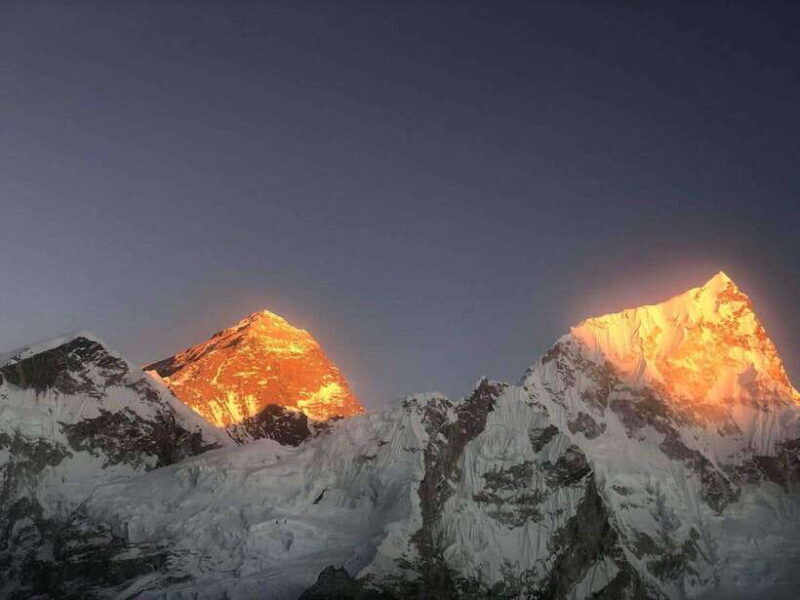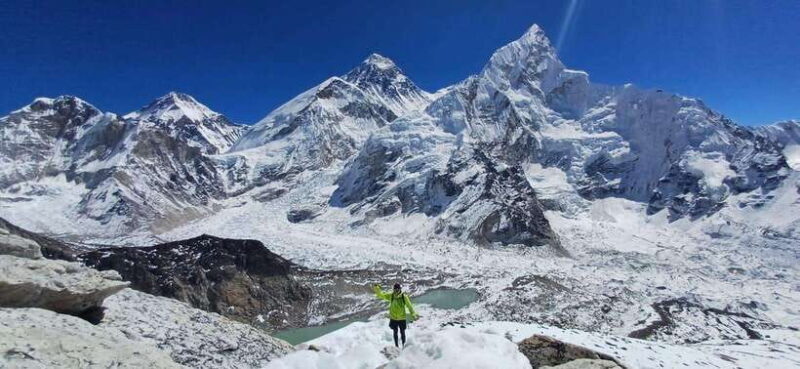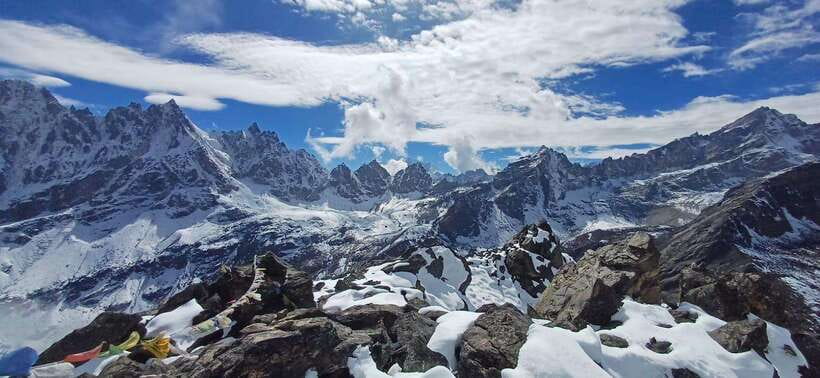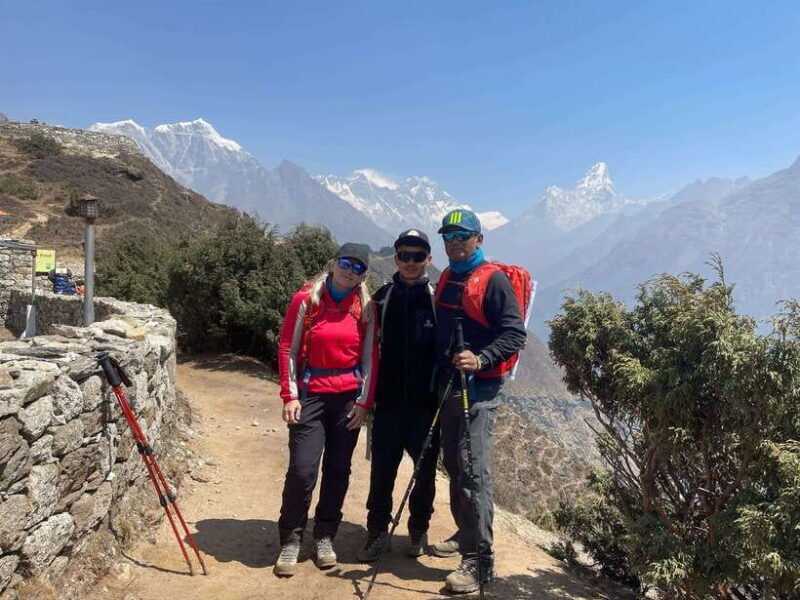Planning a trek to see Mount Everest up close is a bucket-list goal for many adventure seekers. This 9-day trek offers a chance to witness a stunning sunrise over Everest from Kala Patthar, one of the most sought-after viewpoints, without the grueling hike all the way to Base Camp. Instead, you get the thrill of trekking through Sherpa villages, visiting ancient monasteries, and finishing with a helicopter ride back to Kathmandu — a combo of traditional trekking and modern convenience that balances adventure with comfort.
What makes this experience stand out? First, the spectacular panoramic views of Everest, Lhotse, Nuptse, and Ama Dablam that you’ll get from Kala Patthar at dawn. Second, the chance to explore the Sherpa culture and monasteries, which add depth and authenticity to the trip. On the other hand, one consideration is that the price of $1,196 per person covers a lot, but the helicopter return, at an extra cost of $1,200, can significantly increase the overall expense. This trek suits those who want an accessible Everest experience combined with culture and breathtaking scenery — ideal for travelers who prefer a shorter, less physically taxing route with a touch of luxury at the end.
Key Points

- Stunning sunrise views of Everest from Kala Patthar are the highlight.
- The trek offers cultural encounters with Sherpa villages and monasteries.
- The journey balances moderate trekking with high-altitude acclimatization.
- The helicopter return adds comfort and a sense of adventure.
- Inclusion of flights, permits, and accommodations helps manage logistics.
- The price reflects both the guided experience and the unique helicopter option.
A Closer Look at the Trekking Experience

This 9-day adventure is designed for travelers who want a taste of Everest’s grandeur without the full Base Camp trek, which is longer and more demanding. Starting with a short flight from Kathmandu to Lukla — often called the world’s most exciting airport — you’ll feel the thrill immediately. The journey then takes you through the lush valleys and rugged mountain terrain of Nepal’s Himalayas, walking through villages that cling to the mountainside, each with their own unique character.
You can also read our reviews of more hiking tours in Kathmandu
The Itinerary Breakdown
Day 1 kicks off with a drive from Kathmandu to Ramechhap or Manthali, followed by a quick 15-minute flight to Lukla. From there, the trek begins with an easy walk to Phakding. This initial stage is designed to gently introduce travelers to the altitude and terrain. The walk is about three hours, with views of the Dudh Koshi River and surrounding peaks.
Day 2 takes you to Namche Bazaar, the bustling hub of the Sherpa community, at 3,440 meters. It’s a six-hour trek that climbs gradually, allowing your body to adapt. You’ll pass through forests of pine and rhododendron, with chances to spot various bird species and maybe even a yak or two.
Day 3 is dedicated to acclimatization. We loved the way local guides organize visits to the Everest View Hotel, one of the highest altitude hotels with spectacular mountain vistas. This day helps prevent altitude sickness and gives you a chance to enjoy the sights without rushing.
Day 4 moves on to Tengboche, famous for its monastery, which is a spiritual center with breathtaking views of Everest and Ama Dablam. The five-hour walk is one of the most scenic sections, with views of the mountains and the chance to experience Sherpa culture firsthand.
Day 5 continues to Dingboche, a charming village nestled in a valley at 4,410 meters. The landscape here is stark yet beautiful, and the village offers a peaceful break before more high-altitude days.
Day 6 is another acclimatization day at Dingboche, with a side trip to Nagerjun (5,100 meters). We appreciated the emphasis on gradual ascent, which is crucial at these heights. The return to Dingboche provides a restful night.
Day 7 takes you to Lobuche, a small settlement at 4,910 meters. The trail gets steeper, but the views of the surrounding peaks make the effort worthwhile. The sense of being close to the giants of the Himalayas is palpable here.
Day 8 is the big one: trekking to Everest Base Camp, at 5,364 meters. The trek is about 8 hours but passes through iconic landmarks, like the Khumbu Glacier. You might find the experience both exhilarating and humbling, standing amidst the colossal ice and rock.
Day 9 begins with a pre-dawn hike to Kala Patthar, at 5,545 meters, to catch the sunrise over Everest. The early morning ascent is manageable and offers the best photo opportunities of the entire trip. After soaking in the views, you’ll trek back to Gorak Shep and then fly by helicopter back to Kathmandu, an added touch of luxury and convenience after days of trekking.
Transportation and Logistics
The logistics are well thought out. The flight from Kathmandu to Lukla and the subsequent trek are standard for Himalayan treks, but the helicopter return is a real perk. It not only saves you from retracing the route but also offers a thrilling aerial view of the mountains. Keep in mind, the helicopter back costs an additional $1,200, which can bump the total price but adds a high point to the adventure.
The tour includes guided trekking, accommodations, meals, permits, and entrance fees, simplifying the planning for travelers. The group size tends to be small, ensuring personalized attention and a more intimate experience.
What Travelers Say
Many reviews note that the views from Kala Patthar are the true highlight. One reviewer mentioned, “Watching the sunrise over Everest was surreal, and the panoramic views of Lhotse, Nuptse, and Ama Dablam left us speechless.” The Sherpa villages and monasteries add cultural depth, with visitors appreciating the chance to learn about local traditions.
The acclimatization days are praised for helping prevent altitude sickness, with one traveler noting, “It’s all about pacing yourself, and the guides really helped us adapt.” The helicopter ride back is often described as a “thrilling finale,” giving a bird’s-eye view of the Himalayas and a quick return to Kathmandu.
Some travelers mention the cost as a consideration but agree that the value comes from the combination of scenery, culture, and comfort. The tour is described as suitable for those with moderate fitness levels, given the high-altitude challenges but manageable daily hikes.
More Great Tours NearbyPractical Considerations
Preparing for this trek means packing warm clothing, sturdy hiking shoes, and essentials like sunscreen, water, and a camera. Weather can change rapidly, so layering is key. Since the tour includes permits and accommodations, travelers don’t need to worry about logistics — just enjoy the journey.
The tour is not suited for children under 12, pregnant women, or individuals with heart, respiratory issues, or altitude sickness. The physical demands and altitude require some fitness, but the included acclimatization days help mitigate risks.
You can also read our reviews of more tours and experiences in Kathmandu
- Everest Base Camp Helicopter Tour Landing at Hotel Everest View
- Everest Base Camp Trek With Helicopter Return From Gorakshep to Lukla
- Private Everest Base Camp Gokyo Helicopter for 2 Pax With Flyover
- Everest Base Camp Over Sky Sharing Helicopter Tour.
- Everest Base Camp Helicopter Tour Through Kalapatthar
- Everest Base Camp Helicopter Tour Stop at Everest View Hotel
Final Thoughts: Is This Trek Right for You?

This Everest adventure offers a fantastic balance of scenery, culture, and comfort. The sunrise from Kala Patthar is one of the most memorable sights you can experience in Nepal, and doing it with a helicopter return makes the trip feel special without requiring weeks of tough trekking. It’s ideal for travelers who want a high-altitude adventure with some modern luxuries—not to mention the chance to see Everest at dawn from an unbeatable vantage point.
If you’re looking for an accessible Everest experience that combines traditional trekking with a touch of indulgence, this tour hits the mark. It’s a great choice for those who want remarkable views, cultural insights, and a memorable ending with a helicopter ride, all in just under two weeks.
FAQ

What is included in the tour price? The cost covers guided trek to Kala Patthar, flights from Ramechhap to Lukla, accommodations, meals during the trek, guide expenses, permits, entrance fees, and Ramechhap transport. Airport pick-up from Kathmandu is also included if needed.
How long is the trek each day? Daily trekking times vary from about 3 to 8 hours, depending on the stage. The most demanding day is the trek to Everest Base Camp, but overall, the itinerary is designed with acclimatization and manageable daily distances.
What is the cost of the helicopter return? The helicopter back from Gorak Shep to Kathmandu costs an additional $1,200, offering a quick and scenic end to your Himalayan adventure.
Is this trek suitable for beginners? It requires a moderate level of fitness and some acclimatization. The included rest days help, but travelers should be prepared for high altitudes and variable weather.
What should I bring on this trek? Pack warm layers, a hat, camera, snacks, hiking shoes, sunscreen, water, and trekking gear. Weather can change quickly, so layered clothing is essential.
Are there any restrictions or exclusions? Personal expenses, travel insurance, porters if needed, and Wi-Fi are not included. The tour is not suitable for children under 12, pregnant women, or those with certain health issues.
To sum it up, this trek offers a rare combination: the awe of standing at the foot of Everest at dawn, surrounded by some of the world’s most breathtaking scenery, coupled with the comfort of a helicopter ride back. It’s perfect for travelers craving a memorable, accessible Himalayan experience without the extensive commitment of a full Everest Base Camp trek. Whether you’re a seasoned trekker or a first-timer eager for that iconic mountain view, this journey offers a well-balanced mix of adventure, culture, and comfort.
You can check availability for your dates here:More Helicopter Tours in Kathmandu
- From Kathmandu: Everest Base Camp Helicopter Tour landings
- Kathmandu: Everest Helicopter Tour with Landing at EVH
- Kyanjin Gompa Helicopter Tour: The Best Himalayan Experience
- Everest Base Camp Helicopter Tour with Landing
- Everest Base Camp Helicopter Tour with Landings from KTM
- From Kathmandu: Helicopter Tour to Langtang- Gosaikunda
More Hiking & Trekking Tours in Kathmandu
More Tour Reviews in Kathmandu
Not for you? Here's more nearby things to do in Kathmandu we have reviewed
- From Lukla: Everest Base Camp (EBC) 10-Day Trek
- Kathmandu : Everest Mountain Flight – with Private Transfers
- Full Day : Kathmandu Sightseeing By Bus Day Trip
- Kathmandu: 7 UNESCO World Heritage Sites Day Tour
- Kathmandu: 8-Day Langtang Valley Trek with Transfers
- Thamel Rickshaw Tour
- Everest View Motorbike Tour- 6 Days
- Kathmandu: Top 4 UNESCO Sites Private/Group Tour with Lunch
- From Oceans to Mountains-9 Days (Nepal Guided Tour)
- From Kathmandu: Everest Base Camp Helicopter Tour landings
- Kathmandu: Food and Drink Walking Tour
- Life and spirituality tour of Kathmandu
